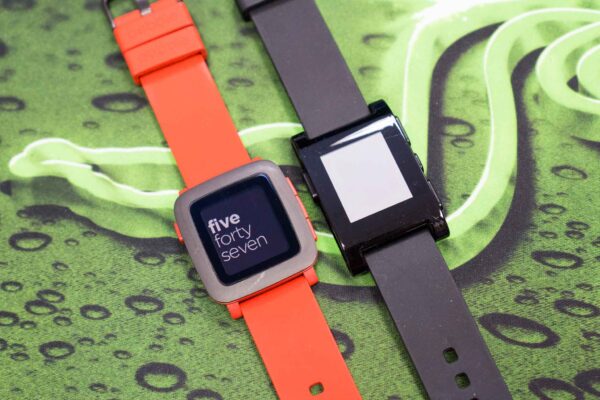If you haven’t been living under a rock, you should have heard of Pebble. They launched their original Pebble smartwatch in 2012 on Kickstarter to a record success. Their sequel Pebble Time also scored a new funding record on Kickstarter. Now, they’re back again, this time with two smartwatches, and an all-new product category for them, a smart wearable.
Pebble shipped their first smartwatches before Google had Android Wear smartwatches, or Apple had their Watches. But despite subsequent keen competition from numerous Android Wear and Apple Watch offerings, the somewhat smaller Pebble company continued to gain a following. They now have three different smartwatches (or four, if you count the Pebble Time Steel as different from the Pebble Time), including the Pebble Time Round that they sold directly outside of any crowdfunding platform.
Pebble’s new Kickstarter campaign offers the Pebble 2 and Pebble Time 2, which are improved versions of the Pebble Classic (originally simply called Pebble). There’s also another reward item, a new product category for them, the Pebble Core smart wearable.
The Pebble 2 and Pebble Time 2 are easy to understand if you’re already familiar with the Pebble Classic and Pebble Time. The former is a monochrome e-ink display smartwatch, while the latter has a 64-colour e-paper display. The new Pebble 2 and Pebble Time 2 both add new key new feature: an optical heart rate sensor.
Smartwatches have been a core business for Pebble. This time around, they’ve stepped out to develop a smart wearable. The Pebble Core begins as an activity tracker, looking similar to basic fitness fobs that track your run or count your steps. But Pebble was looking at doing a whole lot more than just an activity tracking gadget, and this is where the Pebble Core gets really exciting. It has 3G cellular built-in, it has Wi-Fi built-in, and it also has GPS. The Pebble Core can also stream music from Spotify, or play music from files saved in its memory.
The new Pebble Core is really quite amazing. It’s not just a tiny computer, it’s a real headless Android device with 3G cellular, Wi-Fi, Bluetooth, GPS and other sensors. It’s sounds like a great hacker device. In fact, that’s what Pebble thinks too, so they have a Pebble Core for Hackers section in their Kickstarter campaign, offering various cool ideas such as tracking your pet, one-click Uber, SOS location alerts, and unlocking your car.
The Pebble Core’s Kickstarter price also makes it a really exciting device. It’s just US$69. You’d be hard pressed to find an Android device, albeit a headless one, with the connectivity features of the Pebble Core at that price.
Coming back to the Pebble 2 and Pebble Time 2, they’re also no less exciting. The Pebble Time 2, in particular, is now all metal. The original Pebble Time was plastic, with a separate metal variant called the Pebble Time Steel at additional cost. This time, the Pebble Time 2 is metal from the get-go and it costs less than the Pebble Time’s Kickstarter price.
Other improvements in the Pebble Time 2 include a bigger e-paper display, going up from the 1.25-inch in the Pebble Time to 1.5-inch. The resolution has also gone up from 144×168 pixels with a 177 ppi pixel density to the new 220×228 pixels with 202 ppi pixel density. It’s a better display.
Under the hood, the Pebble Time 2 has a more powerful ARM Cortex M7 processor, compared to the slower ARM Cortex M4 in the Pebble Time.
It makes sense to compare the Pebble Time 2 to the Time Steel when it comes to the physical build. The Time 2 is unfortunately slightly thicker, though by just a really tiny bit, going from 10.5 mm in the Time Steel to 10.8 mm now. The form, however, is now smaller, and that’s despite a bigger e-paper display, going from 46.1 x 37.5mm in the Pebble Time Steel to 40.5 x 37.5 mm in the new Time 2. They weight remains about the same, 64.6 g in the Time 2, versus the Time Steel that starts at 62.3 g (but going up to 116.3 g depending on model).
Pebble smashed through US$1M funding within one hour of launch. They’re now standing at US$8.6M at the time of this writing, and there’s still some 33 days to go. Head over to Pebble’s Kickstarter campaign page if you’re interested.
November can’t come soon enough.

